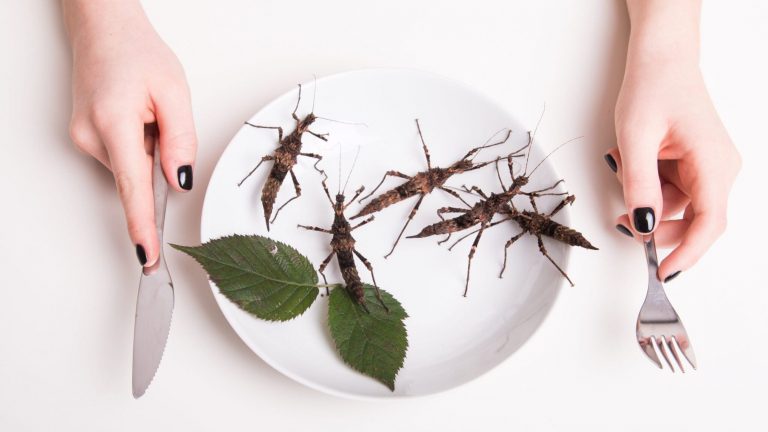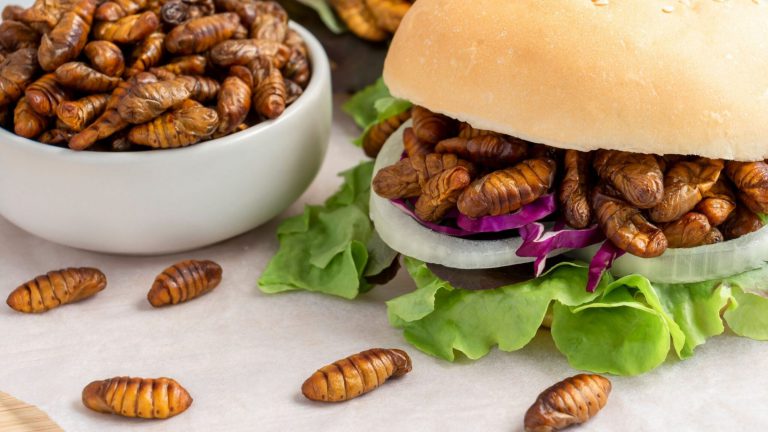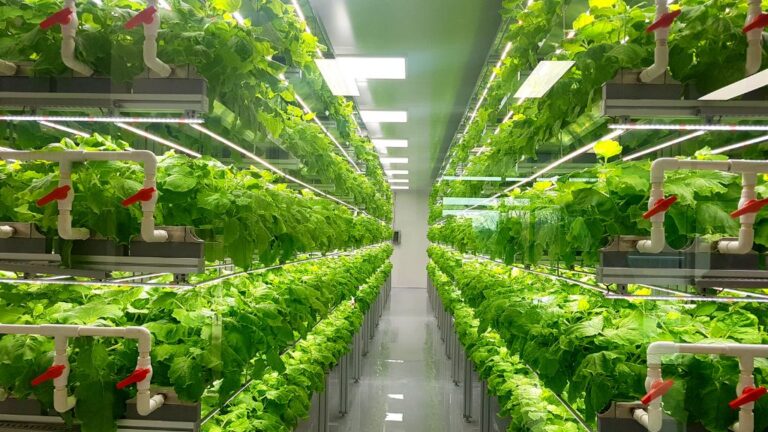Fermentation may be just as important as fire when it comes to making food and, by extension, for human development. This ancient way of preserving food made fruits and vegetables last longer and easier to digest, providing early humans with a healthier and more stable food supply.
More than 5,000 fermented foods of plant and animal origin grace our dining tables. The science of fermentation has advanced considerably, paving the way for innovative and sustainable products like plant-based meat substitutes and animal-free dairy products.

So how exactly does fermentation benefit our food? And what are the benefits and challenges of the latest microbial fermentation techniques? Here’s what I’ve learned.
What is fermentation anyway? From traditional craft to modern precision
Fermentation is the process by which microorganisms such as yeasts, other fungi, and bacteria are added to sugars or starches to create new foods. People have been using this process for centuries to make some of the world’s favourite food staples. These include bread, yoghurt, tempeh, sauerkraut, kimchi, fish sauce, and kombucha. In simple terms, the microorganisms consume the sugars and starches and convert them into other compounds such as acids, alcohols, and gases, giving fermented foods unique flavours and textures.
Traditional fermentation is something of an art because it depends on the natural processes of microorganisms and changes in temperature and pH. With experience and new technologies, however, our ability to standardise and scale up the fermentation process has improved dramatically. This has paved the way for the commercial production of fermented foods such as cheese, tofu, and beer.
More recently, techniques like biomass and precision fermentation have been developed so that food production can be done on a larger scale and more precisely. Fermentation can yield end products—think cheese or bread—but also ingredients or other inputs to plant-based or cultivated foods. One example is biomass-fermented mycoprotein, a fungus used to make alternative meat products. Precision-fermented enzymes can improve the texture, flavour and shelf life of plant-based proteins. In addition, it is possible to create growth factors as inputs for cultured meat production.
Savouring the benefits: boosting flavour and nutrition
When our ancestors discovered and developed methods to harness the power of microbes to transform food, they were onto something. Early evidence of the application of this technique to foodstuffs such as honey, rice, and fruit dates back to 7000 BC in China. Food preservation is one of the oldest and most valuable benefits of this process. By inhibiting the growth of harmful microorganisms, fermentation improves the shelf life and safety of foods.
Fermentation also imparts new and more complex flavours and aromas to foods, enhancing their taste. This is one of the reasons these techniques have endured over many centuries, even with the introduction of new ways of preserving foods—notably refrigeration and canning.
Since the early 1900s, research has demonstrated the health benefits of fermentation. We now understand that fermentation improves digestion and the nutritional value of foods. For example, cheese-making concentrates the nutrient content of the milk it’s made from, rendering it more energy-dense.
Fermented foods are particularly beneficial for the gut microbiome. They are rich in probiotics—live bacteria and yeasts—which can help restore and maintain a healthy balance of microorganisms in the body. This can, in turn, improve digestion, boost the immune system, and even support mental health. For example, kimchi, a spicy Korean dish made from fermented vegetables, has been shown to have anti-inflammatory and antioxidant properties. In addition, dietary studies have demonstrated other beneficial health effects of fermented foods, including a reduced risk of cardiovascular disease and type 2 diabetes.
Waste not, want not: turning byproducts into new foods
Traditional fermentation techniques rely on turning simple sugars and starches into more complex materials. In contrast, biomass fermentation turns complex materials, including agricultural byproducts such as straw and consumer waste like food scraps, into simpler products. It also yields a high volume of those new materials. And it can result in a wider range of goods than traditional fermentation methods. For example, companies are trialling biomass fermentation using microalgae fed on sugar rather than sunlight.
Quorn is a long-standing example of food products made using biomass fermentation. Since the mid-1980s, the company has been turning mycoprotein derived from a fermented fungus into a variety of meat substitutes, including burgers, nuggets, and sausages. Quorn’s orange and white packages have adorned the vegetarian food aisle of British supermarkets for nearly 40 years. And they are becoming more common in the US and other countries. Today, several companies are using mycoprotein to create meat, egg, and fish alternatives.
Mycoprotein is one of the healthiest protein sources currently available. It’s a complete protein, containing all the amino acids the human body requires, and is also high in fibre. Along with beans and peas, mycoprotein has one of the greatest positive effects on reducing diet-related mortality as a beef substitute.
Tailor-made ingredients: customising food production
Precision fermentation makes producing large amounts of almost any ingredient possible by using microbial cells as a production host. These cells can be optimised for the intended product and production process, improving yield and purity. As a result, the food industry primarily uses precision fermentation to make specific, high-value functional ingredients.
This is different from biomass fermentation, which quickly scales up the production of fermented ingredients. As a result, precision fermentation is less familiar to most consumers. However, it’s been widely used in food production since the 1990s. This is when (microbially fermented) chymosin was introduced as a replacement for (animal-based) rennet as the coagulating enzyme in cheesemaking.
Indeed, precision fermentation is already in use for many applications including producing vitamins as nutritional supplements, fortifying processed foods, and creating flavourings and colours. By writing DNA sequences that can be put into microorganisms, it is possible to create many substances that animals produce now, such as whey and casein proteins, egg white, and collagen. As the chymosin example suggests, these ingredients can displace animal products in food production, with animal welfare benefits and expanded options for vegetarians and vegans.
Precision fermentation can also produce components found in plants but more efficiently using bacteria or fungi. For example, Impossible Foods has developed (yeast-derived) heme using a gene from soybeans. This allows its plant-based alternative meat products to retain the flavour and colour that (animal-derived) heme gives to animal-based meat.
Precision fermentation does not only have B2B applications to replace ingredients without the consumer noticing. The food industry can also use it to make major constituents of the final product for use as a 1:1 substitution. Animal-free egg replacements and dairy proteins are just two examples.
Eco-conscious eating: fermentation’s sustainability potential
Fermentation can cut down on food waste in two ways. First, fermentation can result in products that last longer and are easier to store, as it has for centuries. But biomass fermentation can also turn waste into new, valuable products. For example, Toast beer is produced from surplus bread that would otherwise be thrown away, helping to prevent food waste and create a more sustainable food system.
In theory, fermentation can create replacements for animal products, on far less land and using less water, particularly when compared to beef and dairy. This is most notably the case when fermentation relies on biomass byproducts as a primary input. However, there is little solid evidence of this because the technologies have yet to reach the scale required for reliable lifecycle analyses.
Calculating the energy costs and, by extension, the opportunities for addressing climate change is even more difficult. Commercial-scale fermentation processes (biomass and precision approaches) require significant energy inputs. This is an issue that the industry will need to address to genuinely have a chance to make fermentation competitive with animal proteins. Not least because energy requirements are a primary driver of high costs for microbially fermented products. Still, some research, which focuses on mycoprotein (for which there is probably the best data), indicates that the related emissions are already considerably lower than for conventional beef and dairy products, and compared to cultured beef.
The road ahead: addressing the barriers
Although industrial uses of fermentation for food production have been around for decades, investment in this area did not take off until 2021. That year, investment capital tripled, accounting for one-third of all alternative protein investments, up from less than 20% in 2020.
Microbial fermentation has many potential advantages but still has some obstacles to overcome. Commercial-scale bioreactor capacity is a significant challenge (most existing capacity is bench- or pilot-scale), particularly outside the United States and Europe. Everywhere, these facilities are not generally purpose-built. Forecasts indicate that manufacturing capacity will need to increase by several orders of magnitude worldwide to support the anticipated industry growth.
As businesses try to enter new markets, regulatory differences between countries can make it more difficult for them to understand and comply with regulations. Labelling and nomenclature approaches are also a subject of debate, for example, whether a microbially fermented product can be labelled as ‘meat’.
Social and cultural barriers may exist to adopting biomass or precision-fermented products. Consumers may be wary of products that are not manufactured using traditional methods or that are perceived as ‘artificial’ or ‘unnatural’. Precision fermentation involving genetic engineering may raise concerns about safety and consumer acceptance. From a social justice standpoint, lowering costs and increasing accessibility to new foods is critical to avoid further exacerbating existing inequalities in the food system.
A fermented future? The role of microbial fermentation in our food systems
Microbial fermentation has been essential to human progress because it extends the shelf life of food, enhances its flavour, and reduces the risk of foodborne illness. Innovative, healthier, and more environmentally friendly food systems may be possible thanks to recent developments in biomass and precision fermentation techniques. Like some other approaches to producing foods in new ways – such as cultured meat – there are challenges with achieving scale in the industry. This also makes it difficult to assess the sustainability credentials of these products. But I’m optimistic that fermentation in all its forms will continue to be a boon to our food systems.
I write about the future of food and the connections between our food systems, the environment and public health. Sign up for my newsletter.
You can also read more here.






